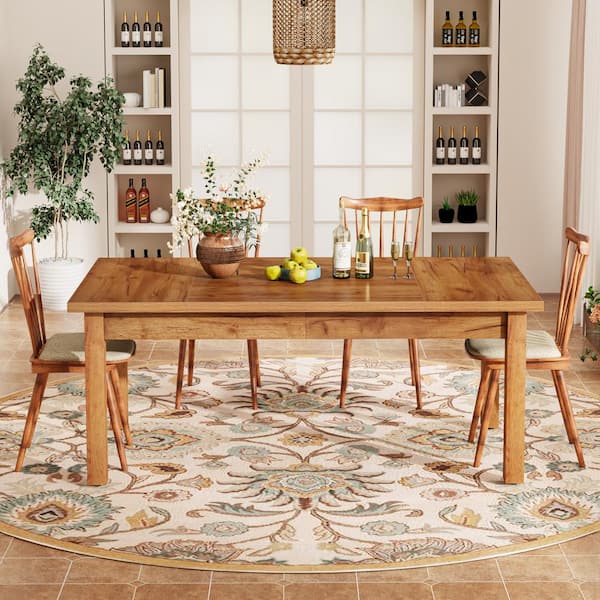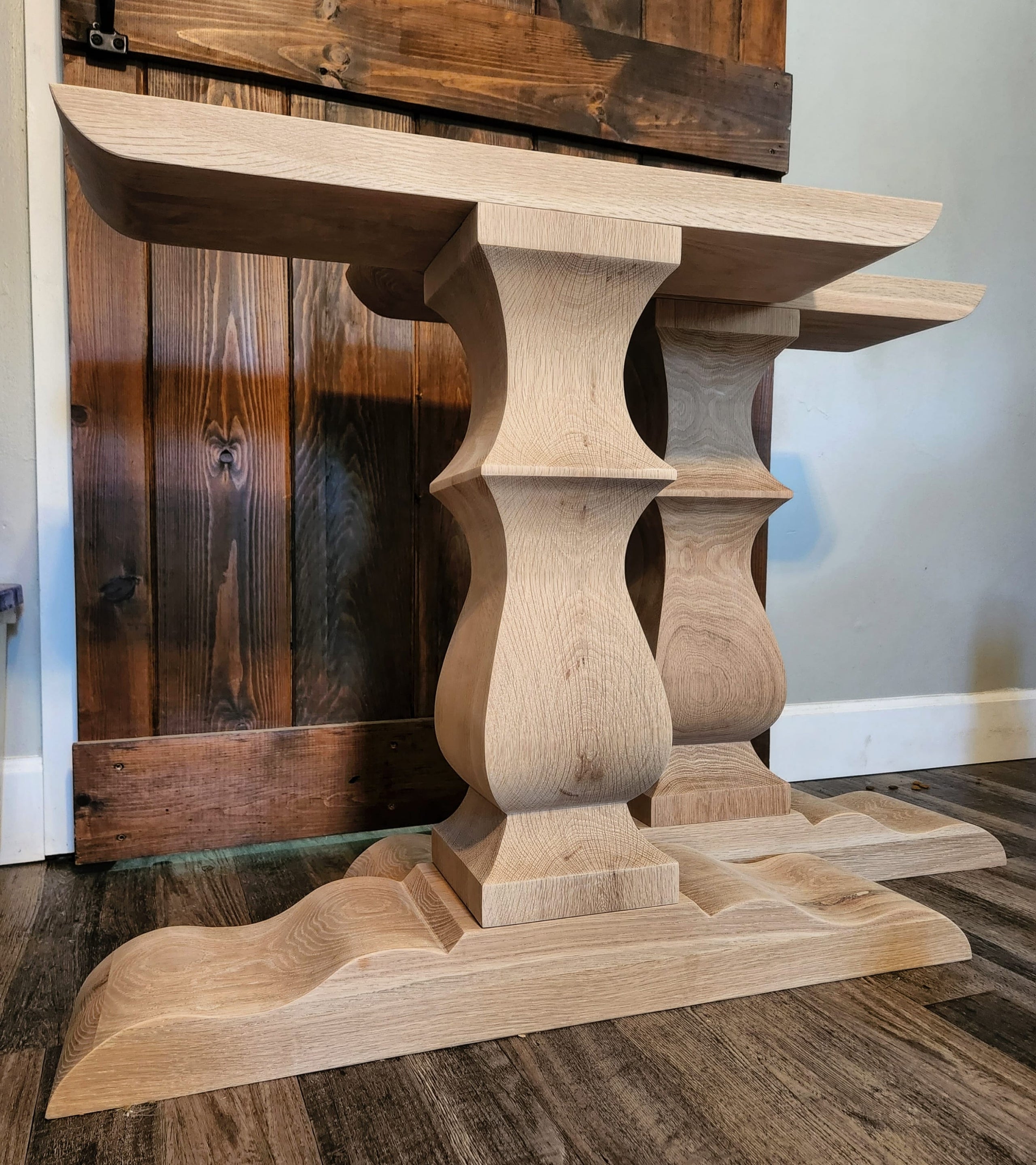Top Patterns in Dining Room Table Legs to Elevate Your Eating Space
Top Patterns in Dining Room Table Legs to Elevate Your Eating Space
Blog Article
A Detailed Appearance at Dining Table Leg Styles: Locating the Perfect Match
Selecting the appropriate dining table leg design is essential for both aesthetic charm and functional performance. Conventional 4 legs provide ageless elegance and stability, while the pedestal base gives enhanced legroom and a modern look. For those with larger tables, trestle legs make sure strong support, whereas barrette legs present a mid-century contemporary ambiance with their minimalist layout. The x-shaped legs mix modern style with boosted stability. Each of these choices brings one-of-a-kind advantages, making the selection a lot more than simply an issue of choice. Explore additionally to uncover which style flawlessly complements your eating area and lifestyle.
Traditional 4 Legs
Amongst the different kinds of table leg designs, the standard four-leg style remains an ageless selection for lots of families. This traditional configuration provides a harmonious mix of functionality and aesthetic appeals, making it a perennial favorite. 4 legs give balanced support, making certain the table continues to be steady and with the ability of bearing considerable weight. This is particularly advantageous for families that regularly host huge celebrations or utilize their dining table for several functions, such as work or crafting.
From a visual point of view, the traditional four-leg design can be easily adapted to numerous interior styles. Whether crafted from wood, metal, or a mix of materials, these legs can be intricately sculpted, sleek and minimalistic, or anything in between. Their convenience permits them to complement both rustic and contemporary settings flawlessly.
In addition, the simple framework of the four-leg layout promotes convenience of movement and placement within a space. Unlike even more complicated bases, this style minimizes obstructions, providing ample legroom for diners. In recap, the typical four-leg dining table leg design weds withstanding elegance with practical capability, making it an astute selection for those seeking both kind and function in their eating furniture.
Stand Base
Usually celebrated for its sophisticated and space-efficient design, the stand base is a prominent choice to the standard four-leg setup in table leg designs. This unique base usually features a solitary main column sustaining the table top, which can vary in kind, from ornately carved wood to sleek, modern-day steel. Among the primary advantages of the pedestal base is its ability to maximize legroom and seating versatility. Without edge legs, restaurants are paid for greater flexibility of movement, making it a perfect option for round and oblong tables that advertise even more intimate and comprehensive events.
In addition, the pedestal base's main support can handle considerable weight, permitting the use of larger tabletops, such as marble or thick hardwood. This stamina coupled with its visual adaptability makes the stand base a popular option in both typical and modern interior setups. It can flawlessly incorporate with different style motifs, from timeless elegance to minimal modernity. The main column itself offers a canvas for intricate styles and imaginative expressions, including an aspect of visual interest beneath the table. In recap, the stand base integrates functionality snappy, making it a fine-tuned and practical alternative for varied dining settings.
Trestle Legs
Trestle legs give a durable and ageless foundation for eating tables, identified by their horizontal cross-bracing and strong assistance beams. Originating from middle ages times, this layout has evolved yet kept its vital framework, making it a perennial favorite in both standard and modern setups. The central trestle light beam, commonly sustained by two or more vertical posts, uses phenomenal stability, enabling for larger table sizes without the requirement for extra legs.
A substantial advantage of trestle leg tables is the ample legroom they provide. Unlike tables with 4 edge legs, the absence of obstructions at the table's sides gives unobstructed room for chairs and diners, enhancing convenience and accessibility. This makes trestle tables perfect for fitting larger gatherings, whether in a dining-room or a banquet hall.
The aesthetic adaptability of trestle legs is notable. Readily available in a range of materials such as wood, steel, and composite, they can be completed to enhance a variety of indoor styles. From rustic farmhouse to sleek contemporary styles, trestle legs can be tailored to suit specific tastes. Their enduring charm and practical advantages make trestle legs an engaging choice for those seeking both style and practicality in their dining table.
Hairpin Legs

The allure of barrette legs depends on their simplicity and convenience - dining room table legs. Offered in a series of materials, consisting of steel and brass, they can be finished in numerous shades to match different indoor styles. Whether coupled with a rustic wood tabletop or a contemporary glass surface, hairpin legs easily mix performance with a touch of vintage beauty
Resilience is This Site one more remarkable function of barrette legs. In spite of their fragile appearance, these legs are engineered to birth considerable weight, making certain the eating table remains stable and protected. Furthermore, they are fairly simple to set up, making them a preferred choice for do it yourself lovers and professional furnishings manufacturers alike.
X-Shaped Legs

Built from materials such as steel, click this timber, or a useful site mix of both, X-shaped legs can be tailored to match different style preferences. Steel legs often provide a smooth and industrial feel, suitable for loft-style apartments and modern-day dining areas.
In addition, the design behind X-shaped legs ensures also weight circulation, minimizing the danger of wobbling and improving resilience. This makes them particularly fit for bigger eating tables that call for additional support. Fundamentally, X-shaped legs mix practical design with contemporary looks, making them an ageless selection for varied eating atmospheres.
Conclusion
A comprehensive understanding of eating table leg styles reveals the distinct qualities and benefits of each design. Traditional 4 legs supply stability and timeless appeal, while stand bases supply legroom and a structured appearance. Trestle legs guarantee robust support for larger tables, and hairpin legs present a mid-century contemporary aesthetic. X-shaped legs incorporate contemporary layout with boosted security. Selecting the suitable leg design makes certain both functional and aesthetic contentment in any eating area.
Report this page